The average cost of Angiography (Including Non-Ionic Contrast) in India approximately ranges between INR 41575 to 54879 (USD 500 to USD 660)
An angiography, also identified as an angiogram, is an X-Ray test that requires the use of a dye and a camera to take perfect pictures of the blood circulation inside a vein or an artery. This technique can be done for the veins or the arteries of the chest, arms back, belly, head, and legs.
| Country | Cost |
|---|---|
| India | USD 500 |
| Israel | USD 2000 |
| Malaysia | USD 2000 |
| Poland | USD 1500 |
| Saudi Arabia | USD 8500 |
| Singapore | USD 4400 |
| South Korea | USD 3000 |
| Thailand | USD 1800 |
| Tunisia | USD 2200 |
| Turkey | USD 1000 |
| United Arab Emirates | USD 3020 |
The average cost of angiography in India starts at USD 500 and is done by some of the best surgeons and doctors who have good experience and expertise in performing angiography with the help of the latest technology and the best treatment methods available in the world. Heart angiography hospitals in India rely on scientific research, advancement, and education. It makes every effort to develop, research and use new technology to expand patients' experience and fulfillment. Hundreds of patients from the neighboring states and overseas visit India for angiography each year. The hospitals in India performing angiography tests are fortified with all the latest technology that preserves them at par with any top hospital overseas. The hospital encourages cross-consultation that guarantees thorough and wide-ranging diagnosis and treatment of the patient.
| City | Minimum Cost | Maximum Cost |
|---|---|---|
| Ghaziabad | USD 540 | USD 610 |
| Panjim | USD 510 | USD 620 |
| Hyderabad | USD 520 | USD 610 |
| Faridabad | USD 500 | USD 660 |
| Kolkata | USD 530 | USD 640 |
| Bengaluru | USD 510 | USD 600 |
| New Delhi | USD 500 | USD 610 |
| Kochi | USD 520 | USD 610 |
| Ahmedabad | USD 520 | USD 660 |
| Greater Noida | USD 510 | USD 660 |
Treatment cost
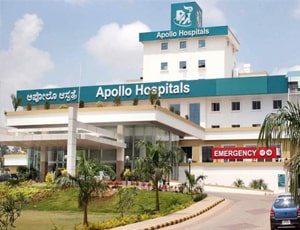
Types of Angiography (Including Non-Ionic Contrast) in Apollo Hospitals Bannerghatta and its associated cost
| Treatment Option | Approximate Cost Range (USD) | Approximate Cost Range (INR) |
|---|---|---|
| Angiography (Overall) | 564 - 1009 | 45673 - 83942 |
| Coronary Angiography | 572 - 894 | 47025 - 74793 |
| Cerebral Angiography | 664 - 1003 | 55949 - 81578 |
| Peripheral Angiography | 668 - 1013 | 56532 - 83729 |
| Renal Angiography | 554 - 909 | 45153 - 73886 |
DOCTORS IN 13 SPECIALITIES
FACILITIES & AMENITIES
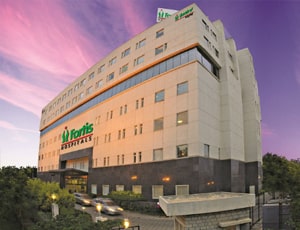
Types of Angiography (Including Non-Ionic Contrast) in Fortis Hospital and its associated cost
| Treatment Option | Approximate Cost Range (USD) | Approximate Cost Range (INR) |
|---|---|---|
| Angiography (Overall) | 507 - 913 | 41552 - 74624 |
| Coronary Angiography | 505 - 811 | 41681 - 66629 |
| Cerebral Angiography | 608 - 910 | 49875 - 75273 |
| Peripheral Angiography | 607 - 918 | 49996 - 74825 |
| Renal Angiography | 509 - 810 | 41801 - 66337 |
DOCTORS IN 12 SPECIALITIES
FACILITIES & AMENITIES

Types of Angiography (Including Non-Ionic Contrast) in Sarvodaya Hospital and Research Centre and its associated cost
| Treatment Option | Approximate Cost Range (USD) | Approximate Cost Range (INR) |
|---|---|---|
| Angiography (Overall) | 507 - 915 | 41549 - 75079 |
| Coronary Angiography | 509 - 816 | 41729 - 66681 |
| Cerebral Angiography | 610 - 916 | 50056 - 74579 |
| Peripheral Angiography | 610 - 909 | 50168 - 74579 |
| Renal Angiography | 507 - 814 | 41518 - 66581 |
DOCTORS IN 14 SPECIALITIES
FACILITIES & AMENITIES

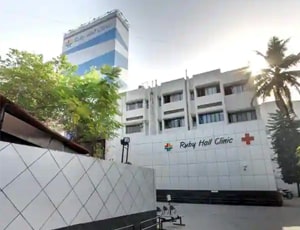
Types of Angiography (Including Non-Ionic Contrast) in Ruby Hall Clinic and its associated cost
| Treatment Option | Approximate Cost Range (USD) | Approximate Cost Range (INR) |
|---|---|---|
| Angiography (Overall) | 469 - 829 | 38513 - 68318 |
| Coronary Angiography | 473 - 756 | 38282 - 60808 |
| Cerebral Angiography | 559 - 852 | 46537 - 68215 |
| Peripheral Angiography | 561 - 837 | 46558 - 69507 |
| Renal Angiography | 468 - 741 | 38623 - 61896 |
DOCTORS IN 13 SPECIALITIES
FACILITIES & AMENITIES
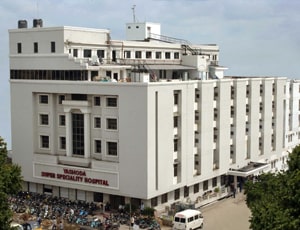
Types of Angiography (Including Non-Ionic Contrast) in Yashoda Hospital, Malakpet and its associated cost
| Treatment Option | Approximate Cost Range (USD) | Approximate Cost Range (INR) |
|---|---|---|
| Angiography (Overall) | 509 - 909 | 41611 - 74660 |
| Coronary Angiography | 507 - 816 | 41607 - 66478 |
| Cerebral Angiography | 612 - 918 | 49765 - 75180 |
| Peripheral Angiography | 608 - 909 | 50017 - 74989 |
| Renal Angiography | 509 - 810 | 41572 - 66346 |
DOCTORS IN 10 SPECIALITIES
FACILITIES & AMENITIES
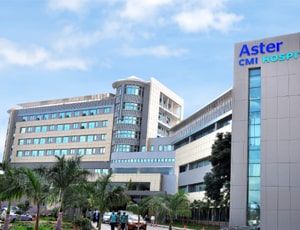
Types of Angiography (Including Non-Ionic Contrast) in Aster CMI Hospital and its associated cost
| Treatment Option | Approximate Cost Range (USD) | Approximate Cost Range (INR) |
|---|---|---|
| Angiography (Overall) | 509 - 913 | 41424 - 74960 |
| Coronary Angiography | 509 - 808 | 41517 - 66597 |
| Cerebral Angiography | 611 - 910 | 49967 - 74856 |
| Peripheral Angiography | 608 - 916 | 50144 - 74585 |
| Renal Angiography | 508 - 813 | 41567 - 66572 |
DOCTORS IN 13 SPECIALITIES
FACILITIES & AMENITIES
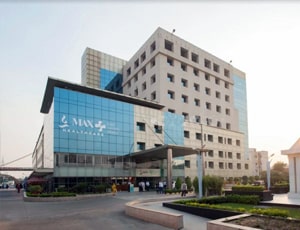
Types of Angiography (Including Non-Ionic Contrast) & Its Cost at Max Super Specialty Hospital, Vaishali
| Treatment Option | Approximate Cost Range (USD) | Approximate Cost Range (INR) |
|---|---|---|
| Coronary Angiography | 570 - 590 | 46740 - 48380 |
| Cerebral Angiography | 580 - 600 | 47560 - 49200 |
| Peripheral Angiography | 550 - 570 | 45100 - 46740 |
| Renal Angiography | 560 - 580 | 45920 - 47560 |
Factors affecting Angiography (Including Non-Ionic Contrast) cost in Max Super Specialty Hospital, Vaishali
| Cost Factors | Cost Range (USD) | Cost Range (INR) |
|---|---|---|
| Initial Consultation Fees | 40 - 50 | 3280 - 4100 |
| Anesthesia Fees | 80 - 90 | 6560 - 7380 |
| Cardiologist Fees | 120 - 130 | 9840 - 10660 |
| Medications and Supplies | 30 - 40 | 2460 - 3280 |
| Imaging Equipment | 180 - 200 | 14760 - 16400 |
| Room Charges | 30 - 40 | 2460 - 3280 |
| Nursing Care | 40 - 50 | 3280 - 4100 |
| Administrative Fees | 30 - 40 | 2460 - 3280 |
DOCTORS IN 14 SPECIALITIES
FACILITIES & AMENITIES
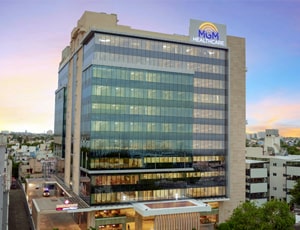
Types of Angiography (Including Non-Ionic Contrast) in MGM Healthcare and its associated cost
| Treatment Option | Approximate Cost Range (USD) | Approximate Cost Range (INR) |
|---|---|---|
| Angiography (Overall) | 509 - 912 | 41592 - 74707 |
| Coronary Angiography | 509 - 809 | 41698 - 66597 |
| Cerebral Angiography | 607 - 909 | 49949 - 74743 |
| Peripheral Angiography | 610 - 914 | 50081 - 75249 |
| Renal Angiography | 506 - 809 | 41486 - 66861 |
DOCTORS IN 13 SPECIALITIES
FACILITIES & AMENITIES
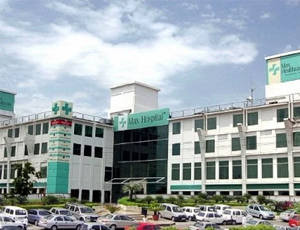
Types of Angiography (Including Non-Ionic Contrast) & Its Cost at Max Hospital, Gurgaon
| Treatment Option | Approximate Cost Range (USD) | Approximate Cost Range (INR) |
|---|---|---|
| Coronary Angiography | 590 - 605 | 48380 - 49610 |
| Cerebral Angiography | 600 - 615 | 49200 - 50430 |
| Peripheral Angiography | 580 - 595 | 47560 - 48790 |
| Renal Angiography | 595 - 610 | 48790 - 50020 |
Factors affecting Angiography (Including Non-Ionic Contrast) cost in Max Hospital, Gurgaon
| Cost Factors | Cost Range (USD) | Cost Range (INR) |
|---|---|---|
| Initial Consultation Fees | 40 - 50 | 3280 - 4100 |
| Anesthesia Fees | 80 - 90 | 6560 - 7380 |
| Cardiologist Fees | 120 - 130 | 9840 - 10660 |
| Medications and Supplies | 30 - 40 | 2460 - 3280 |
| Imaging Equipment | 170 - 185 | 13940 - 15170 |
| Room Charges | 30 - 40 | 2460 - 3280 |
| Nursing Care | 40 - 50 | 3280 - 4100 |
| Administrative Fees | 30 - 40 | 2460 - 3280 |
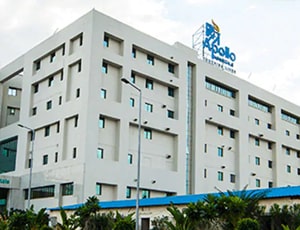
Types of Angiography (Including Non-Ionic Contrast) in Apollo Hospital and its associated cost
| Treatment Option | Approximate Cost Range (USD) | Approximate Cost Range (INR) |
|---|---|---|
| Angiography (Overall) | 559 - 1025 | 45560 - 84680 |
| Coronary Angiography | 556 - 910 | 46803 - 74107 |
| Cerebral Angiography | 688 - 1033 | 56011 - 83060 |
| Peripheral Angiography | 682 - 995 | 55842 - 82600 |
| Renal Angiography | 571 - 901 | 46659 - 74302 |
DOCTORS IN 13 SPECIALITIES
FACILITIES & AMENITIES
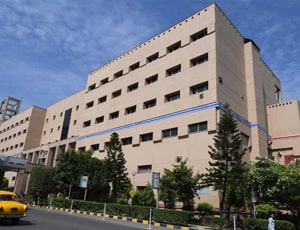
Types of Angiography (Including Non-Ionic Contrast) in Apollo Multispecialty Hospitals and its associated cost
| Treatment Option | Approximate Cost Range (USD) | Approximate Cost Range (INR) |
|---|---|---|
| Angiography (Overall) | 572 - 1007 | 45836 - 82177 |
| Coronary Angiography | 567 - 904 | 47052 - 73414 |
| Cerebral Angiography | 680 - 1004 | 54919 - 84672 |
| Peripheral Angiography | 673 - 1028 | 55794 - 84361 |
| Renal Angiography | 552 - 915 | 45840 - 73562 |
DOCTORS IN 13 SPECIALITIES
FACILITIES & AMENITIES
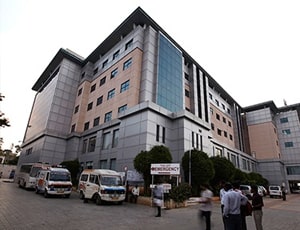
Types of Angiography (Including Non-Ionic Contrast) in BGS Gleneagles Global Hospitals and its associated cost
| Treatment Option | Approximate Cost Range (USD) | Approximate Cost Range (INR) |
|---|---|---|
| Angiography (Overall) | 571 - 1015 | 47016 - 84315 |
| Coronary Angiography | 562 - 894 | 45845 - 74536 |
| Cerebral Angiography | 685 - 992 | 54710 - 84061 |
| Peripheral Angiography | 664 - 990 | 56518 - 83070 |
| Renal Angiography | 570 - 911 | 46457 - 73912 |
DOCTORS IN 14 SPECIALITIES
FACILITIES & AMENITIES
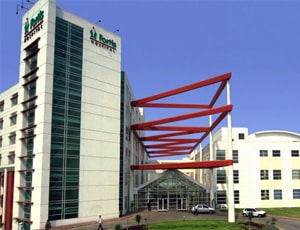
Types of Angiography (Including Non-Ionic Contrast) in Fortis Hospital and its associated cost
| Treatment Option | Approximate Cost Range (USD) | Approximate Cost Range (INR) |
|---|---|---|
| Angiography (Overall) | 510 - 916 | 41580 - 75007 |
| Coronary Angiography | 509 - 814 | 41805 - 66591 |
| Cerebral Angiography | 607 - 915 | 50087 - 75268 |
| Peripheral Angiography | 607 - 910 | 50141 - 74822 |
| Renal Angiography | 508 - 815 | 41428 - 66274 |
DOCTORS IN 12 SPECIALITIES
FACILITIES & AMENITIES
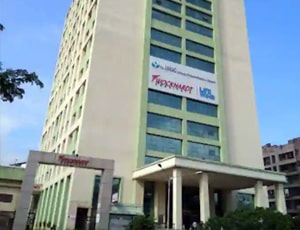
Types of Angiography (Including Non-Ionic Contrast) in Wockhardt Hospital, Umrao and its associated cost
| Treatment Option | Approximate Cost Range (USD) | Approximate Cost Range (INR) |
|---|---|---|
| Angiography (Overall) | 507 - 916 | 41623 - 74922 |
| Coronary Angiography | 507 - 813 | 41417 - 66500 |
| Cerebral Angiography | 609 - 912 | 49794 - 74975 |
| Peripheral Angiography | 610 - 914 | 49991 - 74937 |
| Renal Angiography | 509 - 816 | 41729 - 66806 |
DOCTORS IN 13 SPECIALITIES
FACILITIES & AMENITIES
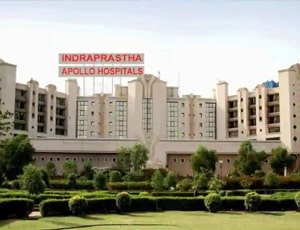
Types of Angiography (Including Non-Ionic Contrast) in Indraprastha Apollo Hospital and its associated cost
| Treatment Option | Approximate Cost Range (USD) | Approximate Cost Range (INR) |
|---|---|---|
| Angiography (Overall) | 568 - 994 | 45568 - 82064 |
| Coronary Angiography | 573 - 886 | 45337 - 73029 |
| Cerebral Angiography | 669 - 1028 | 55541 - 82581 |
| Peripheral Angiography | 677 - 1034 | 56052 - 81558 |
| Renal Angiography | 567 - 919 | 45908 - 73132 |
DOCTORS IN 14 SPECIALITIES
FACILITIES & AMENITIES
Most physicians advise their patients to undergo the angiogram procedure (also known as angiography and arteriogram) when certain symptoms such as a heart attack or chest pain become a source of worry. A stress test is performed on patients who report chest pain, which is then followed by an angiogram test.
Angiography procedure aims at testing the blockages in the coronary arteries apart from any other cardiovascular-related ailments. Angiography and angiogram procedure can both locate narrowing arteries or blockages that may exist in different parts of the body.
Angiography is recommended for patients with coronary heart diseases (CHD), which can cause the heartbeat to stop suddenly and abruptly. The patient may also suffer from severe chest pain. Angiography can also be performed on patients on an emergency basis when they experience a heart attack. If the blockage is not treated immediately, then healthy tissues around the heart start perishing and turn into scar tissue. It can give rise to several long-lasting problems. Angiography may also be required in the case of a patient with aortic stenosis or those who have had an abnormal heart stress test.
The procedure involves administering a sedative for relaxation. An intravenous line is inserted into the vein. This is just a precautionary step to ensure that medication can be provided or blood products can be given in case of unwanted complications that take place during the angiography procedure.
The patient is kept under close observation for at least 6 to 12 hours if the procedure is performed on an outpatient basis. In case of a femoral artery puncture, the leg is almost kept immobile during the observation period.
Blood pressure and other vital signs are continuously monitored. A cold pack is applied to reduce swelling in the area of puncture and medications are given in case of extreme discomfort.
Hematoma may develop in a few patients. This indicates continuous bleeding from the puncture site and has to be watched for. Two to three days of complete rest is advised and driving should be avoided in the case of patients who have had fluorescein angiography. Direct exposure to sunlight should be avoided for at least 12 hours.
Ask your healthcare adviser for the best multiple options and choose the one that meets your expectations
The cost of Angiography (Including Non-Ionic Contrast) in India starts from USD$ 350. Angiography (Including Non-Ionic Contrast) in India is available across many hospitals in different states.
Different hospitals have different pricing policy when it comes to the cost of Angiography (Including Non-Ionic Contrast) in India. The top hospitals for Angiography (Including Non-Ionic Contrast) in India covers all the expenses related to the pre-surgery investigations of the candidate. The comprehensive Angiography (Including Non-Ionic Contrast) package cost includes the cost of investigations, surgery, medicines and consumables. Extended hospital stay, complications after the surgery or new diagnosis may affect the overall cost of Angiography (Including Non-Ionic Contrast) in India.
Angiography (Including Non-Ionic Contrast) in India is offered by multiple hospitals across the country. Some of the best hospitals for Angiography (Including Non-Ionic Contrast) in India include the following:
The recovery of the patient many vary, depending on several factors. However, on an average, patient is supposed to stay for about 3 days in the country after discharge. This is important to ensure that the surgery was successful. During this time, control and follow-up tests take place to check for medical fitness.
One of the topmost destinations for Angiography (Including Non-Ionic Contrast) is India. It has a variety of accredited hospital, affordable cost of treatment and some of the best medical fraternity. Some of the other destinations that are popular for Angiography (Including Non-Ionic Contrast) include the following:
Apart from the cost of Angiography (Including Non-Ionic Contrast), the patient is also required to pay additionally for daily meals and guest house accommodation. These charges may vary starting from USD$ 25 per person.
Some of the best cities in India which offer Angiography (Including Non-Ionic Contrast) are:
The patient is supposed to stay at the hospital for about 1 days after Angiography (Including Non-Ionic Contrast) for monitoring and care. During the recovery, the patient is carefully monitored and control tests are performed to see that everything is okay. If required, physiotherapy sessions are also planned during recovery in hospital.
Angiography (Including Non-Ionic Contrast) hospitals in India have an overall rating of about 5.0. This rating is calculated on the basis of different parameters such as attitude of the nurses, cleanliness, quality of food and the pricing policy.
There are about 61 Angiography (Including Non-Ionic Contrast) hospitals in India that are best known for their services. Apart from good services, the hospitals are known to follow all standard and legal guidelines as dictated by the local medical affairs body or organization.
Angiography, also known as a coronary angiogram, is a diagnostic procedure used to look into the heart’s blood vessels. This is done with the help of X-ray. It is a day care procedure, that is, the patient can go back home as soon as the procedure is over and if any additional procedures are not planned immediately on the basis of the results of the angiogram. Angiography in India is performed as a majority of hospitals that offer cardiac treatment. It is a common procedure that is conducted by a team of specialists. An angiogram of the heart is known as a coronary angiogram. The same technique can also be used to study the blood flow on the chest, brain, neck and head, arms and legs, or the aorta. There are many reasons why one should go for angiography in India. Some of these reasons include the following:
Some of the best cities to get an angiography done include Delhi, Mumbai, Bangalore, Chennai, Pune, Chandigarh, and Hyderabad. Angiography is a fairly common procedure that is performed in many hospitals across the country. These cities are well-developed and have a strong infrastructure. Additionally, the metropolitan cities in India have airports that are directly or indirectly connected to all major countries in the world. Other facilities like internal road and rail transportation network and telecommunication facilities are widely available in these cities. However, that does not mean that these are the only cities where angiography in India is performed. There are several two-tier hospitals in other cities that perform this procedure.
The average cost of angiography in India is just around $300 at a good hospital with all the facilities. However, the actual angiography cost in India depends on several factors, including the fact whether it is purely being conducted as a diagnostic procedure or the doctors plan to treat the underlying problems as well during the same procedure.
A typical angiogram is a daycare procedure and the cost charged to the patients is usually inclusive of the following:
Bed charges for 8 to 10 hours
Fees charged by the team of doctors
Cathlab charges
Expenses for medications, disposables, and other consumables used
All investigations related to the procedure
One thing to note here is that angiography cost does not include the cost of treatment for the underlying condition of any blockage identified during the procedure. It does not include the angiography stent cost and the expenses for any investigations that are conducted and are not directly related to angiography itself.
The total cost also depends on where exactly the patient undergoes the procedure. For example, angiography cost in Delhi is different from angiography cost in Mumbai. Also, it varies from one hospital to the other. Angiography cost in Apollo Hospitals is different from its cost in any other hospital.
The following are some of the best hospitals for angiography in India:
Angiography, also known as coronary angiogram, is a simple procedure during which X-rays are used to visualize the heart's blood vessels, including veins and arteries. The test helps identify any blockages in the heart’s blood vessels and it’s location. This procedure is done in a cardiac catheterization lab and must be performed by an experienced and skilled cardiologist.
The following are some of the best doctors for angiography test in India:
India is known for its quality of medical treatment and the expertise available for the treatment of cardiac patients, in particular. All types of advanced tests that are conducted along with angiography or coronary angiogram are available. Most of the hospitals that treat cardiac patients have these tests available under the same roof.
Some of the tests that may be conducted alongside angiography test in India include the following:
Sometimes, the interventional cardiologist may decide to perform angioplasty while performing an angiogram to open the blocked vessels.
Angiography cost in India is much less as compared to other countries in the world. In some cases, the difference in the cost is as much as 80 percent. There are many reasons why you should go for angiography in India, including the following: